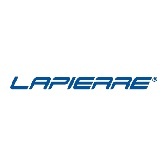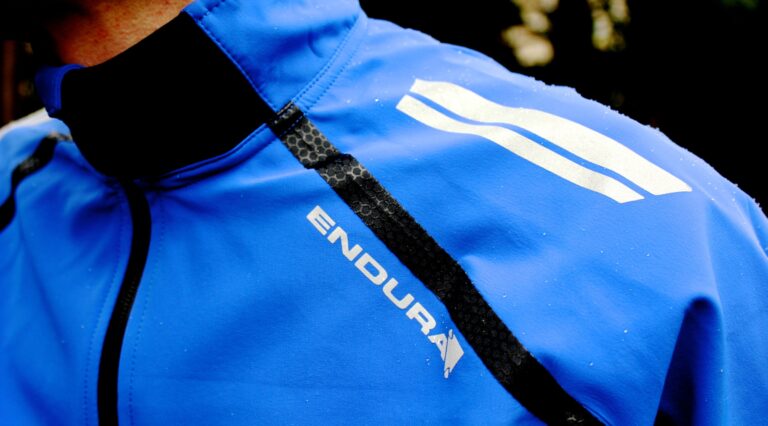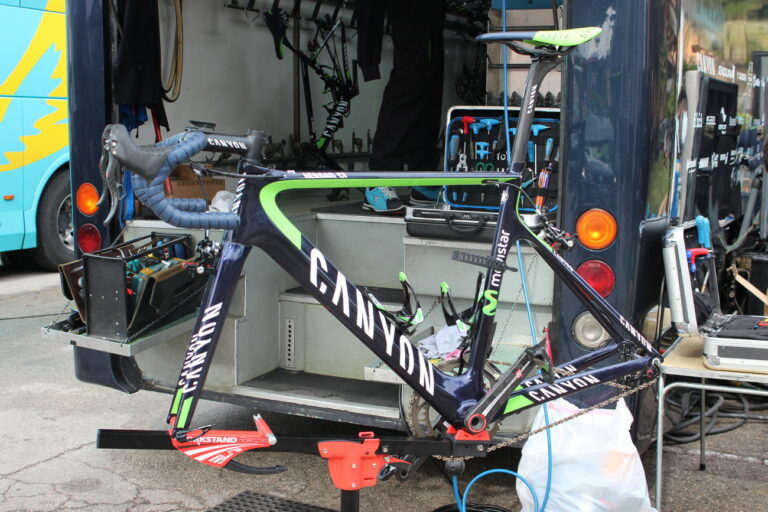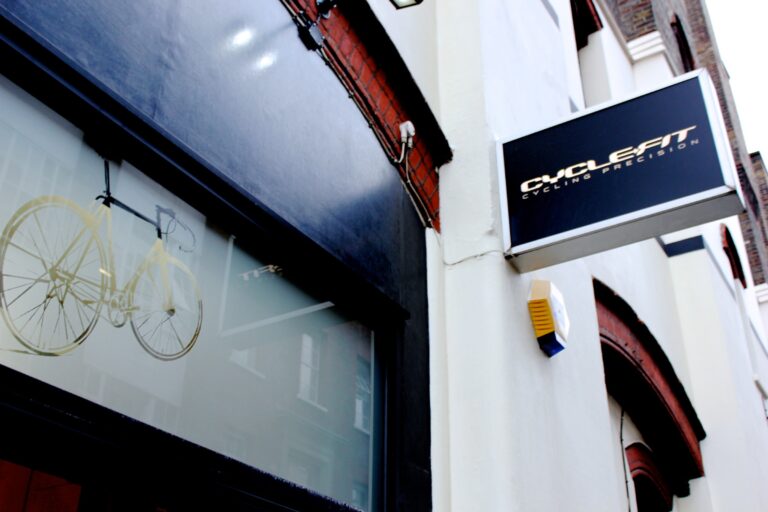The rise and rise of the aero-profiled road bike continues apace, with French brand, Lapierre, first from the blocks in 2014 with the unveiling in Paris on Tuesday of its Aircode machine.
Intended to combine the handling of the Lapierre Xelius EFI road bike (we recently reviewed the EFI 600) and the aerodynamic efficiency of the Aerostorm time trial machine, both ridden in cycling’s elite UCI WorldTour by the FDJ.fr team, the Aircode is set to take its place in the peloton alongside the Giant Propel, Canyon Aeroad CF, and Trek’s heavily revised Madone 7, to name just three machines designed to cheat the wind competing in cycling’s top tier.
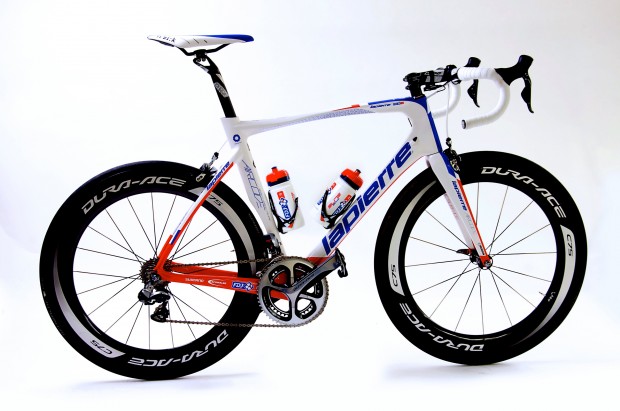
Remi Gribaudo, the designer of all Lapierre’s headline bikes, from the Zesty mountain bike to the sleek road machines ridden by FDJ.fr, told RCUK that the Aircode was a “blank page” project, designed as much from a desire to provide the likes of RideLondon-Surrey Classic winner, Arnaud Demare, with another machine on which to race as to expand the Lapierre road range.
The Aircode is a visually striking machine, one built around Gribaudo’s ‘power box’ concept, where the lower section of the frame is intended for stiffness and the upper for comfort. The heavily sculpted top tube, shallow seat-stays, and cutaway seat-tube gives the rear half of the machine an aggressive appearance. Up front, the semi-integrated stem, in which the headtube cap is positioned in line with the top tube, exentuates the silhouette of a slammed stem. A recess at the fork ‘crown’ provides a home for a Shimano Dura-Ace direct mount brake caliper, repeating a design debuted on the Xelius EFI Ultimate.
While the direct mount rear brake caliper will be a feature of Aircode models sold to the public, FDJ.fr will use a conventional rear brake caliper. Both machines will have a ‘bridge’ uniting the seatstays, but only on the team bikes will it be drilled for brake mounting. Additionally, the top tube on the team bikes will carry an internal cable routing for the rear brake; cabling for the rear brake on the non-team bikes will be routed through the downtube, exiting at the bottom bracket for a more direct journey to the chainstay mounted rear brake caliper. Gribaudo explained that the team had chosen to continue with the conventional, seatstay-mounted caliper to ensure swift wheel changes in the event of punctures, and for ease of use with the mechanics’ workstands, in which the bike rests on the bottom bracket.

The Aircode is the result of a 14 month design process. Gribaudo said that the design had been informed by calculations made from wind tunnel testing of the Aerostorm, launched last July and used by FDJ.fr for the first time in the team time trial at the hundredth Tour de France.
After some nine months of virtual development, prototype machines were produced for testing by six FDJ.fr riders, including the sprinter, Demare, Classics specialist, Yoann Offredo, and the climber, Arnold Jeannesson. Gribdaudo’s favoured tester from the FDJ.fr ranks, Jeremey Roy, an engineering graduate, was racing at the Japan Cup, and so unavailable. The spread among the specialist disciplines of the test crew, however – Classics rider, climber, and sprinter, among them – provided Gribaudo with useful feedback. Additionally, each rides a 55cm frame, avoiding the need to open the tooling at the prototype stage for more than one size.
In geometrical terms, the Aircode is almost identical to the Xelius EFI, sharing head and seat-tube angles, the same length of seat tube, top tube, chainstay, and wheel base. The greatest difference, however, lies in the carbon lay-up. While both use a mix of high modulus 40 tonne fibre, and the still more expensive M30 – a stronger fibre, but not as stiff – the balance between the two differs. Much of the early testing of the Aircode centered on tuning the lay-up, Gribaudo told RCUK.
The testing took place on unpainted, raw carbon frames. The machine presented by FDJ.fr in Paris was the only one in the world to have been painted when it was unveiled on Tuesday. The team bikes have been painted this week and are due for delivery to FDJ.fr imminently. Gribaudo, however, is unable to say when the machine will appear in the peloton. The logistics of running a WorldTour team are challenging at any time of the season, but stretched further than at any point in January and February where racing takes place on the other side of the world from Europe. Half of the team is engaged at the Tour Down Under, while the other half is preparing to start the Tour of Qatar on February 9, 2014.
The Aircode is likely to make its debut in the peloton before it hits the shops, which won’t be until July. UK pricing has yet to be determined, but Lapierre intend to produce a range of Aircodes, and not limit the design to the flagship model shown here. For now, we’ll watch the performance of the Aircode in cycling’s biggest races with interest.

